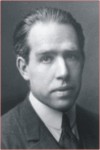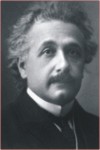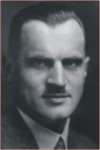Feature
Quantum Universe : A Little History
Mushtari Afroz
 Students and academics, who are familiar with quantum physics, are surely aware of one of the prolonged and sparkling scientific debates that took place between Niels Bohr and Albert Einstein in the 20s and 30s. Albert Einstein was the kind of person who could never accept the probabilistic nature of quantum mechanics and said, “God doesn't play dice. God is not malicious.” He produced a series of thought experiments to disprove the theory of quantum mechanics. On the other hand, Niels Bohr always attempted to show where Einstein had gone wrong. He once replied to his rival Einstein, “Einstein, stop telling God what to do.” Students and academics, who are familiar with quantum physics, are surely aware of one of the prolonged and sparkling scientific debates that took place between Niels Bohr and Albert Einstein in the 20s and 30s. Albert Einstein was the kind of person who could never accept the probabilistic nature of quantum mechanics and said, “God doesn't play dice. God is not malicious.” He produced a series of thought experiments to disprove the theory of quantum mechanics. On the other hand, Niels Bohr always attempted to show where Einstein had gone wrong. He once replied to his rival Einstein, “Einstein, stop telling God what to do.”
 The history of quantum physics dates back to the end of nineteenth century. Newton's classical mechanics and Maxwell's theory of electromagnetism successfully dominated the world of physics until new experimental techniques were developed to probe microscopic domain. The overwhelming success of classical physics made people believe that ultimate theory to describe nature has been achieved. However, towards the end of the nineteenth century, the validity of classical theory was highly challenged when it failed to describe several microscopic phenomena, such as blackbody radiation, the photoelectric effect, atomic stability and atomic spectroscopy. In short, physicists were in deep trouble. The history of quantum physics dates back to the end of nineteenth century. Newton's classical mechanics and Maxwell's theory of electromagnetism successfully dominated the world of physics until new experimental techniques were developed to probe microscopic domain. The overwhelming success of classical physics made people believe that ultimate theory to describe nature has been achieved. However, towards the end of the nineteenth century, the validity of classical theory was highly challenged when it failed to describe several microscopic phenomena, such as blackbody radiation, the photoelectric effect, atomic stability and atomic spectroscopy. In short, physicists were in deep trouble.
 Physicists challenged by the experimental outcomes started seeking for a new framework , which would successfully describe the observations in the microscopic domain. The first real breakthrough came in 1900 when Max Planck introduced the concept of quantum of energy to explain the phenomenon of blackbody radiation. He postulated that the energy exchange between radiation and surroundings takes place in discrete or quantized amounts. Following Planck's approach, Einstein in 1905, proposed that light itself is made of discrete bits of energy called photons. The introduction of the photon concept enabled Einstein to give an elegantly accurate explanation to the photoelectric problem. Physicists challenged by the experimental outcomes started seeking for a new framework , which would successfully describe the observations in the microscopic domain. The first real breakthrough came in 1900 when Max Planck introduced the concept of quantum of energy to explain the phenomenon of blackbody radiation. He postulated that the energy exchange between radiation and surroundings takes place in discrete or quantized amounts. Following Planck's approach, Einstein in 1905, proposed that light itself is made of discrete bits of energy called photons. The introduction of the photon concept enabled Einstein to give an elegantly accurate explanation to the photoelectric problem.
Another breakthrough came in 1913 when the Danish physicist Niels Bohr introduced his model of the hydrogen atom based on the arguments that atoms can be found only in discrete states of energy and that the interaction of atoms with radiation, i.e., the emission or absorption of radiation by the atom takes place only in discrete amounts. This work provided satisfactory explanation to atomic stability, atomic spectroscopy and many other outstanding scientific problems at that time.
 Then in 1923 Arthur H. Compton, an American physicist, made an important discovery through which he confirmed the particle nature of light. By scattering X-rays off electrons he confirmed that X-ray photons behave like particles. Around the same time French physicist Louis de Broglie introduced a powerful new concept that classical physics could not reconcile : he postulated that not only does radiation exhibit particle-like behaviour but conversely, material particles themselves display wave-like behaviour. Then in 1923 Arthur H. Compton, an American physicist, made an important discovery through which he confirmed the particle nature of light. By scattering X-rays off electrons he confirmed that X-ray photons behave like particles. Around the same time French physicist Louis de Broglie introduced a powerful new concept that classical physics could not reconcile : he postulated that not only does radiation exhibit particle-like behaviour but conversely, material particles themselves display wave-like behaviour.
 This series of discoveries- due to Planck, Einstein, Bohr, Compton and de Broglie- gave birth to a totally new framework (in other words, quantum framework) which is probabilistic as opposed to deterministic in nature. In future issues of “Campus” I will discuss the two independent formulations developed by Heisenberg and Schrodinger who skillfully welded the experimental findings into a refined theory : quantum mechanics. This series of discoveries- due to Planck, Einstein, Bohr, Compton and de Broglie- gave birth to a totally new framework (in other words, quantum framework) which is probabilistic as opposed to deterministic in nature. In future issues of “Campus” I will discuss the two independent formulations developed by Heisenberg and Schrodinger who skillfully welded the experimental findings into a refined theory : quantum mechanics.
Note : In this column a bottom-up approach will be taken to explain quantum mechanics using popular examples and questions to be solved by the readers at the end. The goal is to encourage students and science enthusiasts to learn and explore the beauty of quantum physics in a relaxed mood.
I welcome any question regarding the materials discussed here. Please email me at mushtari@fnal.gov
References :
1. Zettili, N., Quantum Mechanics : Concepts and Applications, John Wiley & Sons Ltd. 2001
2. Gasiorowicz, S., Quantum Physics, John Wiley & Sons, Inc. 1996.
3. Nobel Organization website
http://nobelprize.org/nobel_prizes/physics/laureates/
|
